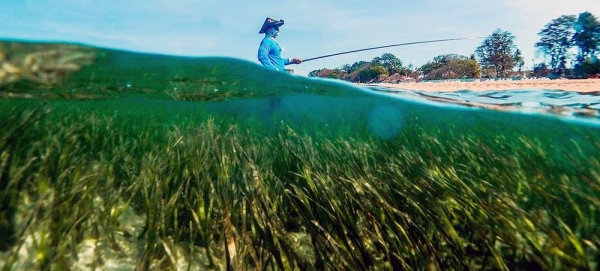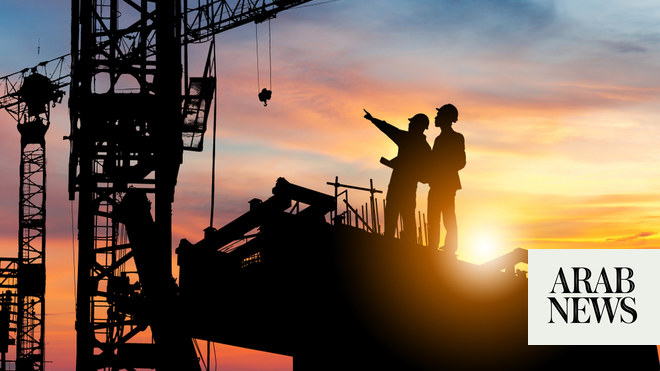
As part of Vision 2030, the Kingdom is redefining its global image and diversifying its economy away from oil
Liberalization, economic reforms and foreign investment are seen as key to the strategy’s success
DUBAI / CAIRO / JEDDAH: Six ambitious landmark projects being developed in the Kingdom aim to help transform the economy while showing the world and all Saudis the nation’s geographic wealth, cultural heritage and hospitality, economic ambitions and aspirations for environmental conservation.
These projects are needed now more than ever to drive foreign investments and increase spending in the economy, as the Kingdom is expecting $7 trillion in investment and government spending to materialize by the end of the decade.
But continued liberalization and economic reforms will be needed to ensure their success, as will continuing foreign investment, according to a finance CEO and an economic consultant and former economics minister.
Nasser Saidi, former economics minister of Lebanon, now Dubai-based economics consultant, said: “These projects need to be seen in the context of the broader objective of undertaking a structural transformation of the Saudi economy.
“Faster and deeper economic diversification is imperative for sustainable job creation for its youthful population, and to address the challenge of the global energy transition away from fossil fuels, Saudi’s main source of income and exports.
“By investing in new sectors (be it tourism, the digital economy or renewables) and in regional economic development on its western seaboard, Saudi Arabia is moving away from over-reliance on oil and redefining the image of the country.
“This is why gigaprojects continued (and related contracts were signed), even during the pandemic, while fiscal tightening was underway.
“Foreign investors can take some comfort from Saudi’s promising high-growth potential (for example in the previously untapped tourism, media and leisure sectors) and associated returns on investment.
“But these are all long-term, long-gestation projects. That is why liberalization measures (full foreign ownership, facilitating long-term residence, reforming labor markets, allowing competition, protecting property rights, insolvency and bankruptcy laws) are important to attract FDI.
“Foreign investors can also take comfort from the fact that the gigaprojects are political standard bearers; they must be seen to be successful and they will continue to be funded from PIF, SCB reserves, tapping debt markets, etc. Notably, they will be much easier to do currently when oil prices are high at $80-plus.”
Tarek Fadlallah, CEO of Nomura Asset Management in the Middle East, told Arab News: “Tourism-related projects have been given a boost by the fact that Saudis have been staying at home. I saw it myself on a recent visit to Riyadh. The whole restaurant and leisure sector has been transformed by the pandemic.
“Projects like AlUla and Qiddiya are more advanced than some others. Foreign companies and funds have actually invested in them and brought them nearer fruition.
“The gigaprojects strategy is hugely ambitious, but if they pull it off it will be a vital contribution to the success of Vision 2030. It will continue to need foreign investment to help make it work.”
The six projects are:
The Red Sea Development Company
Aiming to be a world leader in regenerative tourism, the Red Sea Project is a luxury sustainable tourism project on a 28,000 square km site on the western coast of the Kingdom.
The Red Sea Development Company, established in 2018, is fully owned by the Public Investment Fund and will lead development of the project.
Directly employing 35,000 people, the project showcases the landscape and rich cultural heritage of the Red Sea Coast. Occupying an archipelago of more than 90 islands — some of them untouched — featuring dormant volcanoes, deserts and a wide variety of wildlife and mountainous scenery, it will emphasize environmental preservation while relying exclusively on renewable energy sources, with a ban on single-use plastics and zero waste-to-landfill.
The masterplan has been the result of collaboration between WATG and Buro Happold and includes design concepts from the world’s leading architecture firms. Work on infrastructure has already begun with 80km of new roads completed, and 10,000 workers are based at a construction village.
Qiddiya
Aspiring to be an entertainment, sports and arts hub, Qiddiya is one of the new gigaprojects within the Kingdom’s 2030 Vision. The project is built on five main pillars: Sports and wellness, nature and environment, parks and attractions, motion and mobility, and arts and culture.
Qiddiya Investment Company is another closed, joint-stock company established in 2018 and owned wholly by the PIF. Its objective is to boost the Kingdom’s status as a leading tourist destination.
A “record-breaking” Six Flags theme park will contain 28 rides and attractions in six themed lands. A key attraction will be the Kingdom’s first water theme park. Featuring 23 rides and attractions, it is expected to be the largest in the region. Qiddiya will also feature luxury-tented retreats, animal encounters and outdoor adventure and exploration.
A speed park will include an FIA grade 1 racetrack dedicated to motorsports fans as well as a golf course designed by Jack Nicklaus, one of the greatest golfers of all time, open to both elite and amateur golfers.
The Riyadh-based project is also establishing several arts and cultural centers, including an arts complex, festival grounds, a multiplex cinema and a performing arts center.
Aseer Development Project
Crown Prince Mohammed bin Salman began a tourism strategy on Sept. 28 to develop the southwestern Aseer region with SR50 billion ($13 billion) to attract more than 10 million visitors by 2030.
Tourist attractions on Aseer’s mountain peaks will turn the province into a year-round destination, exploiting the tourism potential of its geographical and natural diversity, culture and heritage.
In addition, it will provide new job opportunities, boost life quality and upgrade essential services and infrastructure in the region.
PIF plans a $3 billion investment to build 2,700 hotel rooms, 1,300 residential units, and 30 commercial and entertainment attractions in Aseer by 2030.
Diriyah Gate Development Authority
On July 15, essential infrastructure construction of the world’s largest culture and heritage city began along Riyadh’s Western Ring Road as part of the Diriyah Gate Development Authority’s development.
The authority has been tasked by the Saudi government to redevelop the “birthplace of the Kingdom” into a world-class destination, and said it will be completing and delivering its first phase assets by early 2022.
The $50 billion gigaproject will feature some of the world’s most luxurious restaurants and hotels, with all structures built in traditional Najdi architectural style.
The first phase of the project’s masterplan will focus on a landscaped park, Wadi Hanifah, and Bujairi Terrace, featuring 18 new restaurants, several of which will be Michelin-starred, while others will offer local Saudi delicacies.
NEOM
A gigaproject, located in northwest Saudi Arabia, on the Red Sea coast, NEOM is seeking contractors and investors.
In mid-September, about 150 design and construction companies visited the project for four days to explore potential partnerships and opportunities.
The project features construction villages with labor communities of up to 30,000 workers, as well as offices, warehouses and construction service establishments.
In late July, the NEOM Company and King Abdullah University of Science and Technology launched a joint project to build the world’s largest coral garden at Shushah Island in NEOM.
The initiative is a perfect example of Saudi Arabia’s promise to protect 95 percent of the natural environment within NEOM. The Shushah Island Coral Reefscape, which spans 100 acres, will demonstrate coral reef restoration conservation in a changing climate. The project is expected to be completed in 2025.
AMAALA
AMAALA is an ultra-luxury project at Saudi Arabia’s Red Sea beach, focusing on wellness, healthy living and meditation.
The project will offer guests facilities and services that provide a luxury experience in areas such as arts, culture, fashion, wellness and sport services.
AMAALA announced on July 27 a partnership with the Saudi Art Council for this year’s 21,39 Jeddah Arts to celebrate creative and artistic talent from the region and beyond.
The exhibition will include a portion of AMAALA’s vision to promote the creative ecosystem of Saudi Arabia through art residencies, platforms and incubators.
On June 22, AMAALA received top honors at the Transform Awards 2021 with its partners, Landor & Fitch, winning the prestigious Grand Prix prize, which showcased the project’s visual and creative strategy rebranding.
In addition, on March 22 AMAALA announced the signing of a memorandum of understanding with the Saudi Contractors Authority, enabling AMAALA to share its potential projects with members of the SCA, and then receive information about interested bidders.












